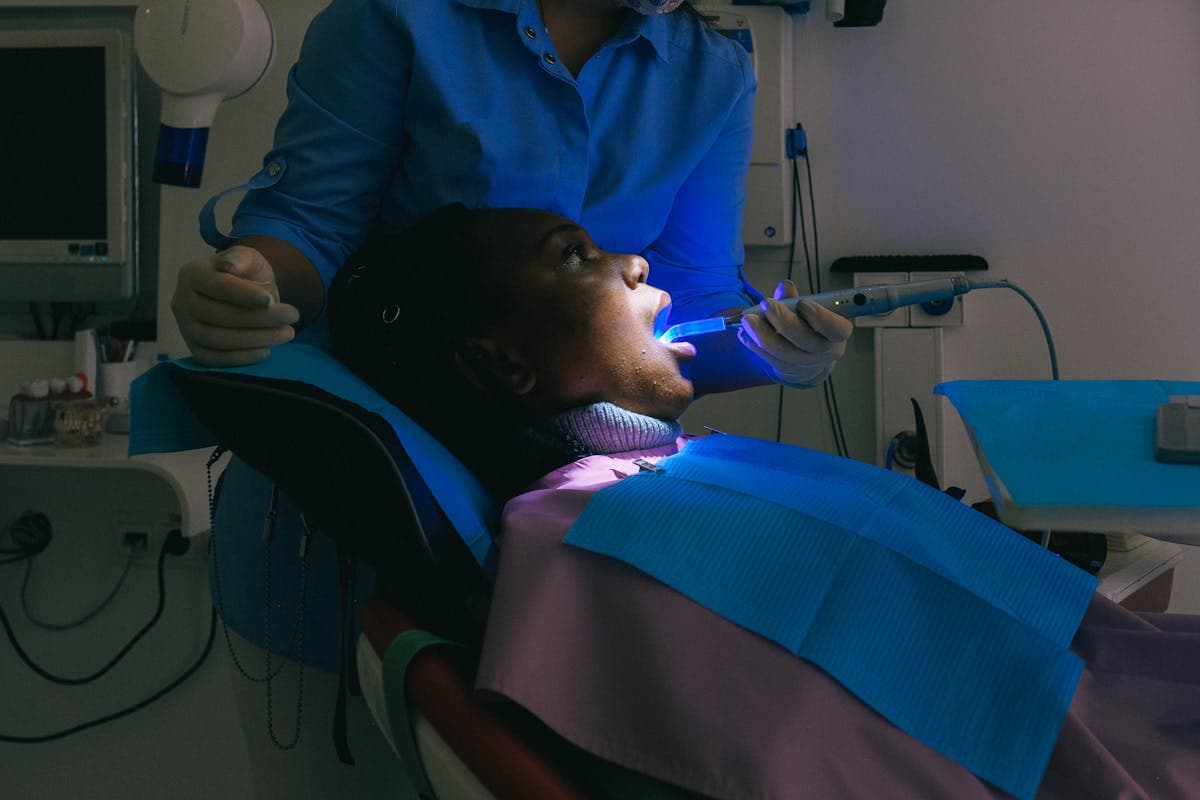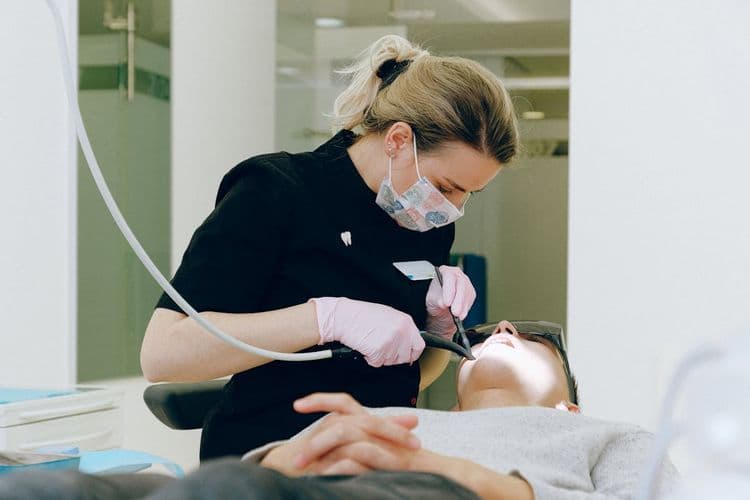Pericoronitis, an inflammation of the tissue surrounding a third molar, can cause significant discomfort and potential complications. Traditional treatments often involve invasive procedures and prolonged recovery times. However, the advent of laser treatment for pericoronitis presents a compelling alternative. This technologically advanced method utilizes concentrated light energy to reduce inflammation and enhance healing, offering immediate relief and fewer risks compared to conventional approaches. As we progress further into the discussion, we will explore the intricacies of this treatment, its benefits, potential downsides, and its effectiveness in comparison to traditional methods.
Understanding Pericoronitis
Pericoronitis, a common dental disorder, is typically characterized by the inflammation of the soft tissues surrounding the crown of a partially erupted tooth, primarily the third molars, also known as wisdom teeth. Symptom identification is vital for proper diagnosis and includes pain, swelling, and difficulty opening the mouth. In severe cases, patients may experience fever and lymph node enlargement. Preventive measures include maintaining good oral hygiene to avoid bacterial build-up leading to infection. Regular dental check-ups can aid in early detection and management. In cases where pericoronitis is recurrent or severe, a dentist may recommend the extraction of the affected tooth to prevent further complications. Understanding pericoronitis is essential for effective management and prevention.
Traditional Pericoronitis Treatments
While the understanding of pericoronitis is a fundamental step, it is equally important to discuss the conventional treatment modalities. Traditional pericoronitis treatments have long paved the way for managing this dental condition effectively. The primary aim is to alleviate pain and eliminate the infection.
- Antibiotic therapy: Antibiotics are often prescribed to fight the infection. The selection of the antibiotic depends on the severity of the infection and the patient’s overall health condition.
- Oral rinses: Patients are advised to rinse their mouth with warm saline water or medicated mouthwash to soothe the affected area and prevent further bacterial growth.
- Surgical removal: In severe cases or recurrent pericoronitis, surgical removal of the affected wisdom tooth may be necessary to prevent future complications.
What Is Laser Treatment?
Innovations in dental science have introduced laser treatment as a cutting-edge solution for various oral health issues. Laser treatment leverages advanced laser technology to deliver precise, minimally invasive care in a variety of dental procedures, offering a host of benefits over traditional techniques.
This innovative approach uses concentrated light energy to perform procedures with precision, reducing trauma, and facilitating quicker healing. It is a highly versatile tool, effective in treating a range of conditions from periodontal disease to pericoronitis.
Laser treatment is revolutionizing dental care by offering an alternative to conventional surgical methods. This technology not only transforms the patient experience, reducing discomfort and recovery time, but also enhances the dentist’s ability to deliver superior results. It symbolizes a significant leap forward in the pursuit of ideal oral health.
Process of Pericoronitis Laser Treatment
When a patient presents with pericoronitis, a common yet potentially problematic dental condition, the process of laser treatment begins with a thorough evaluation of the affected area. Dentists examine the severity of the inflammation and assess the patient’s overall oral health. After the initial evaluation, patient preparation begins. This may include a gentle cleaning of the area and administration of local anesthesia for comfort during the procedure.
The laser procedure steps typically involve:
- The removal of inflamed and infected tissue using a precise, targeted laser.
- The sterilization of the area to eliminate any remaining bacteria.
- The smoothing of the area to prevent further infection and promote healing.
This meticulous process guarantees effective treatment and minimizes potential discomfort or complications for the patient.

Advantages of Laser Therapy
Despite the initial discomfort that may be associated with the procedure, laser therapy for pericoronitis offers several notable advantages, transforming the way dentists approach this dental condition. To begin with, it provides immediate pain relief, a critical consideration for patients suffering from acute pericoronitis. The laser’s precision allows for targeted treatment, reducing trauma to surrounding tissues. This specificity results in less post-operative discomfort and swelling. In addition, lasers greatly accelerate healing speed. They stimulate cell regeneration, promote blood circulation, and reduce inflammation, enhancing the body’s natural healing process. Furthermore, the sterilizing effect of lasers reduces the risk of secondary infections, further promoting healing. Ultimately, these advantages make laser therapy a highly effective and efficient method for managing pericoronitis.
Potential Risks and Downsides
While laser therapy for pericoronitis offers numerous benefits, it is essential to acknowledge the potential risks and downsides associated with this treatment modality. Some patients report discomfort during treatment, although it’s often milder compared to traditional methods.
- Potential Complications: Despite the precision of lasers, inadvertent damage to surrounding tissues may occur, leading to post-operative pain or infection.
- Cost: Laser therapy can be more expensive than conventional treatments, which may impact patient affordability.
- Limited Efficacy: In some cases, patient experiences have indicated laser treatment may not fully eradicate pericoronitis, necessitating further intervention.
The decision to pursue laser therapy should be made in consultation with a dental professional, weighing up the benefits against these potential downsides.
Comparing Laser Treatment to Traditional Methods
A comparative analysis between laser treatment and traditional methods for pericoronitis reveals distinct differences. Traditional methods, often involving surgical extraction, expose patients to risks of infection and prolonged recovery periods. However, laser therapy benefits include minimized bleeding, swelling, and post-operative discomfort, consequently enhancing treatment effectiveness.
Scientifically, laser treatment results in less trauma to the surrounding tissues, thereby promoting quicker healing. It also carries an added advantage of sterilizing the area, reducing the risk of secondary infections. Conversely, traditional methods can often be more invasive, with a higher potential for complications.
Real-Life Success Stories of Laser Treatment
Numerous patients have experienced the transformative benefits of pericoronitis laser treatment, each with unique success stories to share. These patient testimonials shed light on the efficacy of this advanced treatment method.
- Patient A: Reported significant reduction in pain and inflammation post-treatment. The recovery period was rapid, with minimal discomfort experienced.
- Patient B: Had a history of recurring pericoronitis. Laser treatment not only alleviated the symptoms, but also prevented further episodes, improving overall oral health.
- Patient C: Opted for laser treatment due to dental anxiety. The non-invasive nature of the procedure provided a comfortable and stress-free treatment experience.
These real-life success stories underline the potential of laser treatment in managing pericoronitis effectively and efficiently.
Frequently Asked Questions
Does Insurance Typically Cover Pericoronitis Laser Treatment?
Insurance coverage varies considerably among providers and plans. It is essential to consult with your specific provider to determine if treatment costs for advanced dental procedures are included in your coverage.
Can Pericoronitis Laser Treatment Be Performed on Patients of All Ages?
Yes, the procedure can be performed across various age groups, but a thorough evaluation is necessary to determine patient suitability. Age considerations are essential as factors like growth, development, and overall health may influence the outcome.
How Soon Can Normal Eating Habits Resume After Laser Treatment?
Post treatment diet can typically resume within a few days to a week, depending on individual healing timelines. However, patients are advised to initially avoid hard and spicy foods to promote ideal recovery.
Are There Any Specific Aftercare Instructions for Pericoronitis Laser Treatment?
Post treatment care for laser therapy generally includes maintaining oral hygiene, managing pain with prescribed medication, and avoiding hard foods. Specific instructions may vary, so it’s essential to follow the guidelines provided by your healthcare provider.
Can Pericoronitis Recur After Successful Laser Treatment?
Yes, recurrence of pericoronitis is possible after successful laser treatment, typically due to factors like poor oral hygiene or crowded teeth. Prevention strategies include consistent oral care and periodic dental check-ups.


